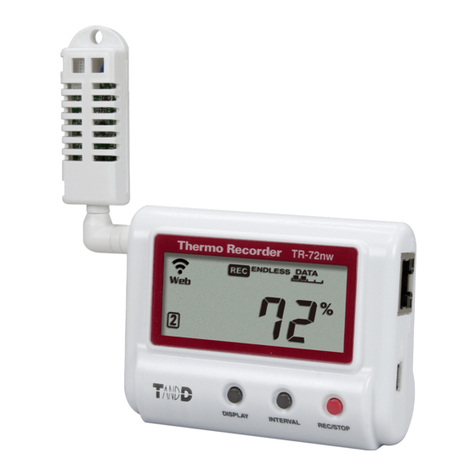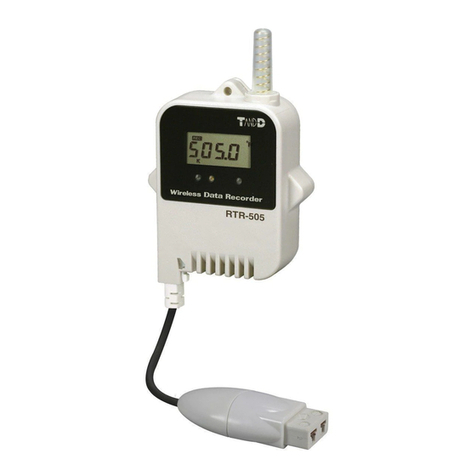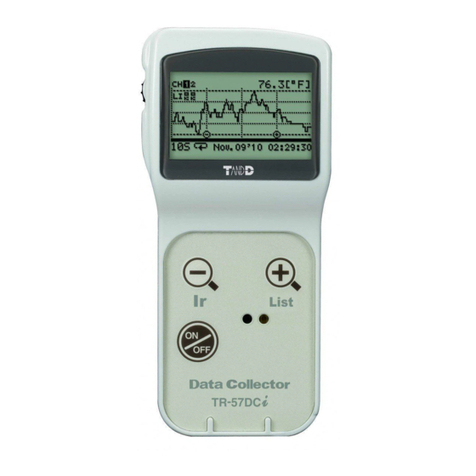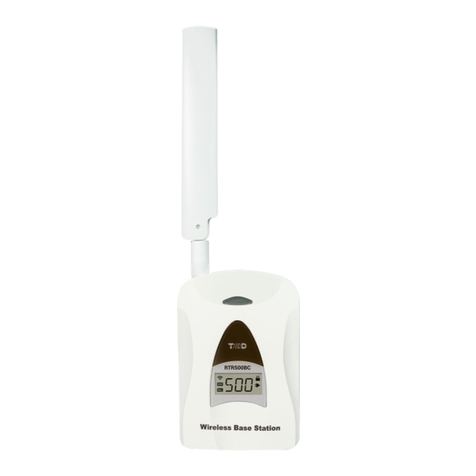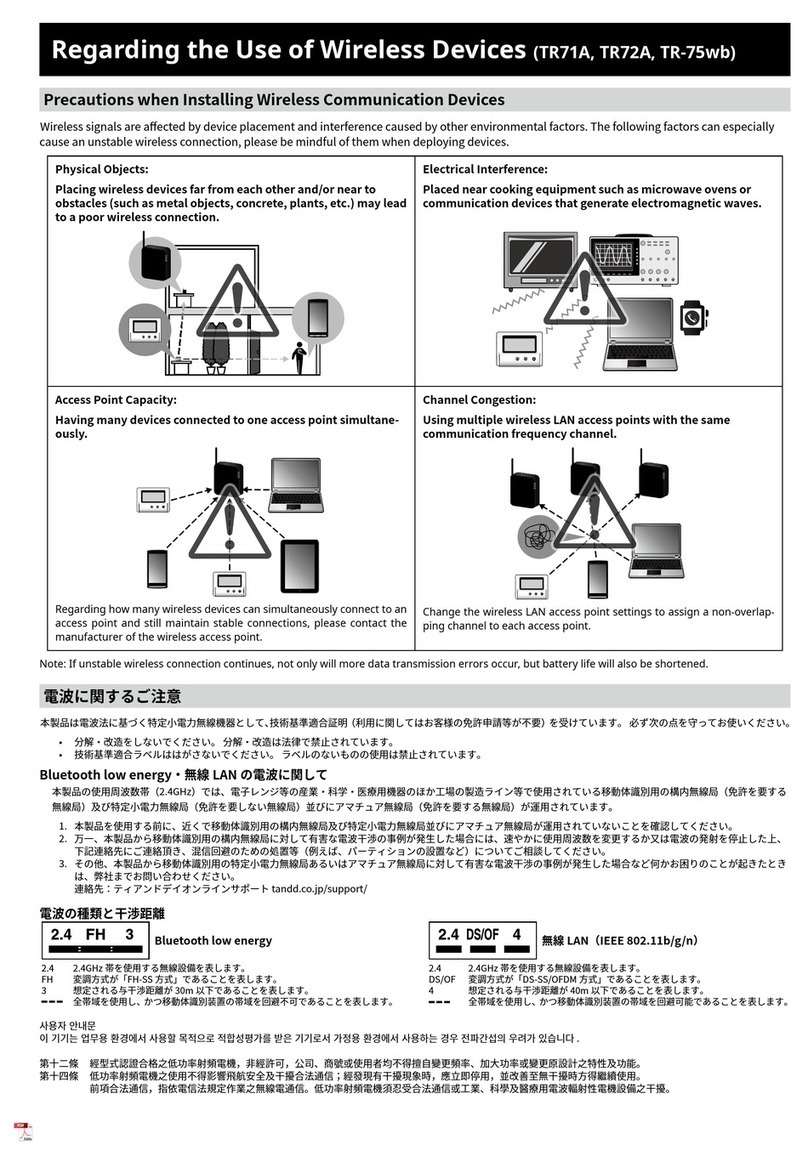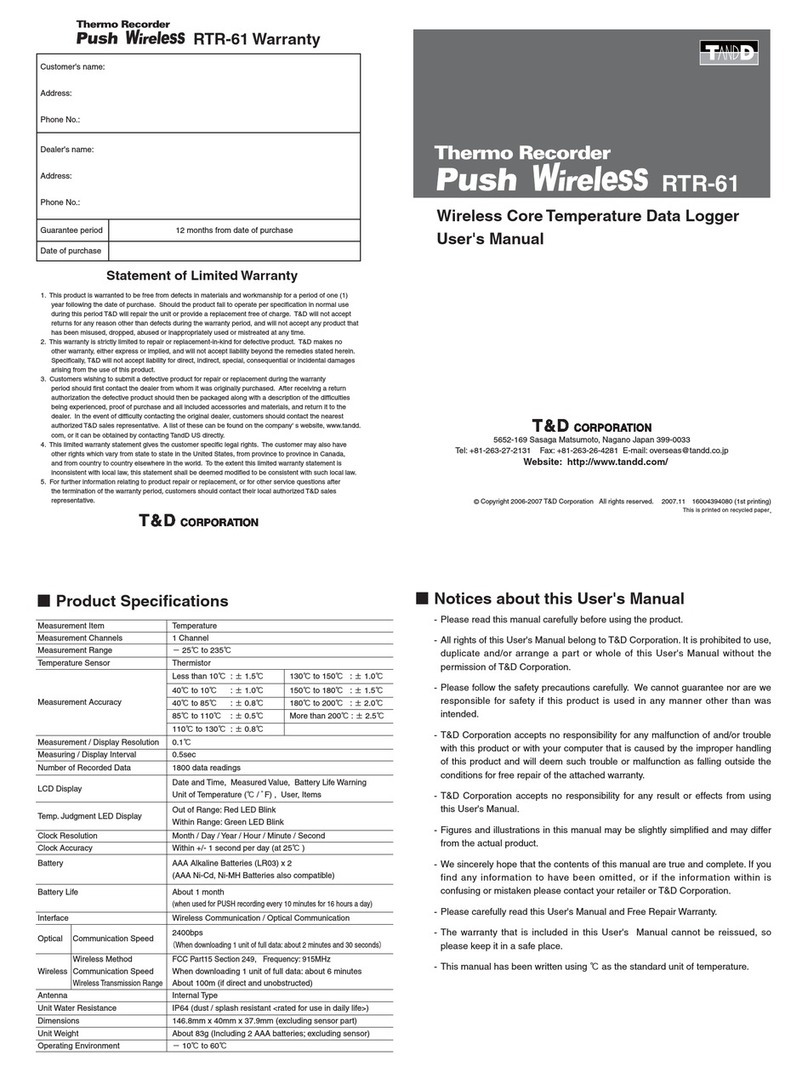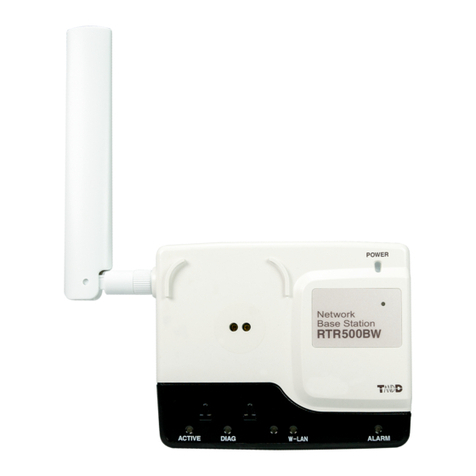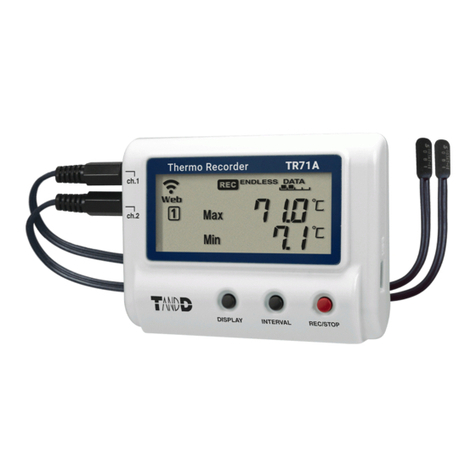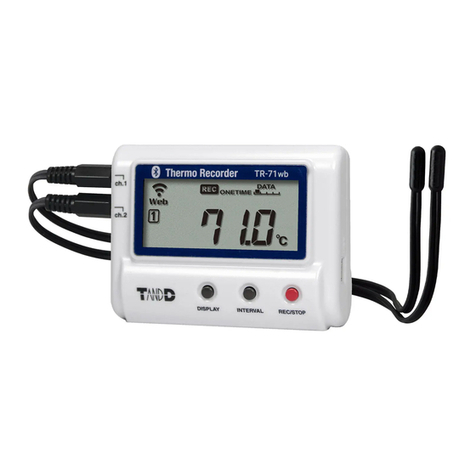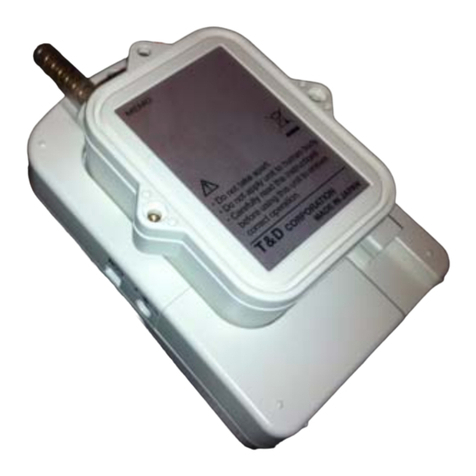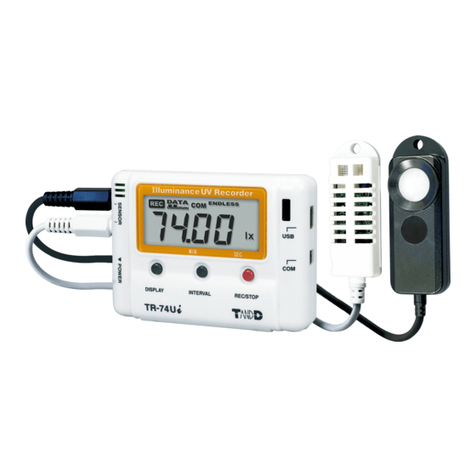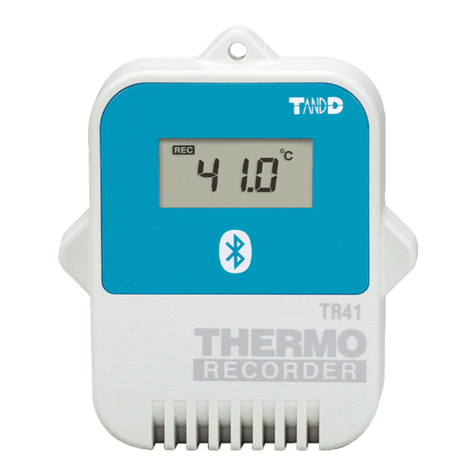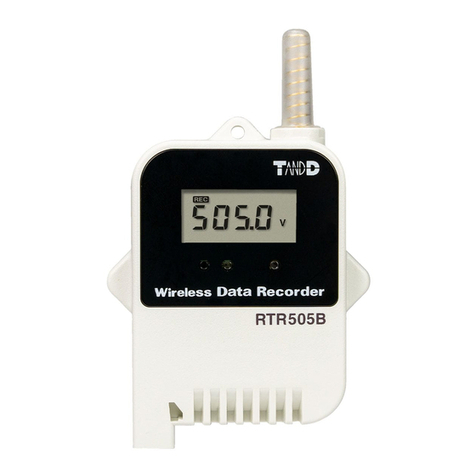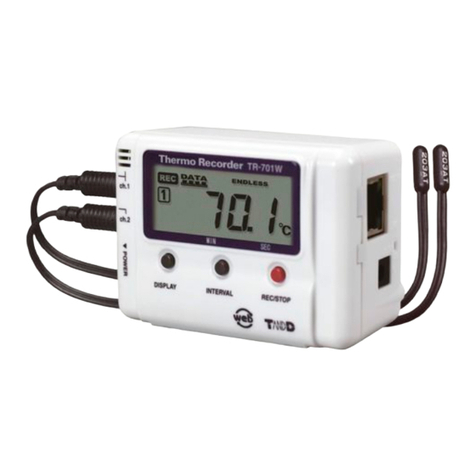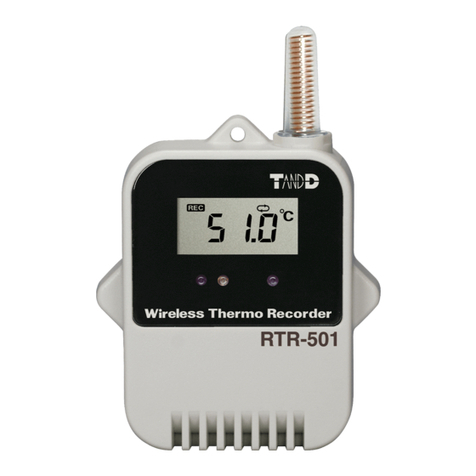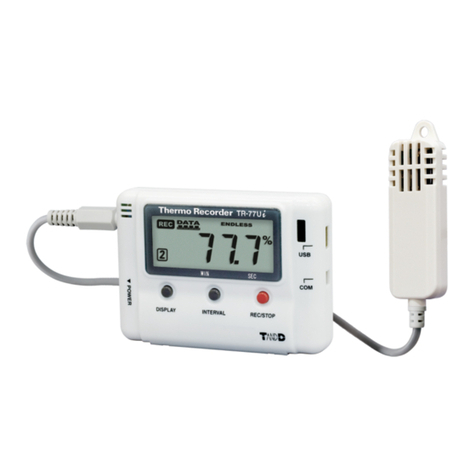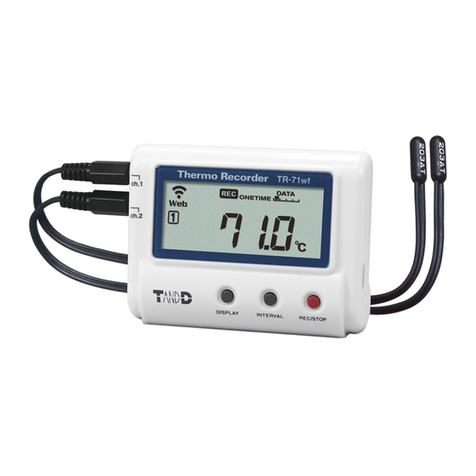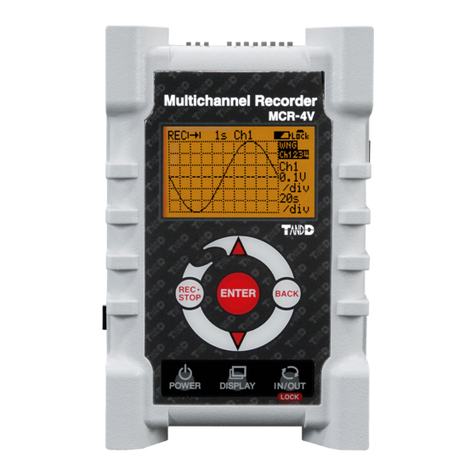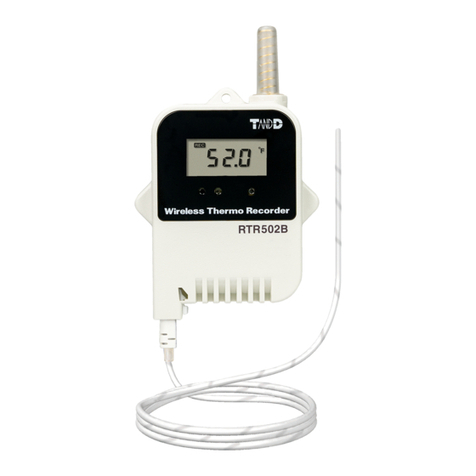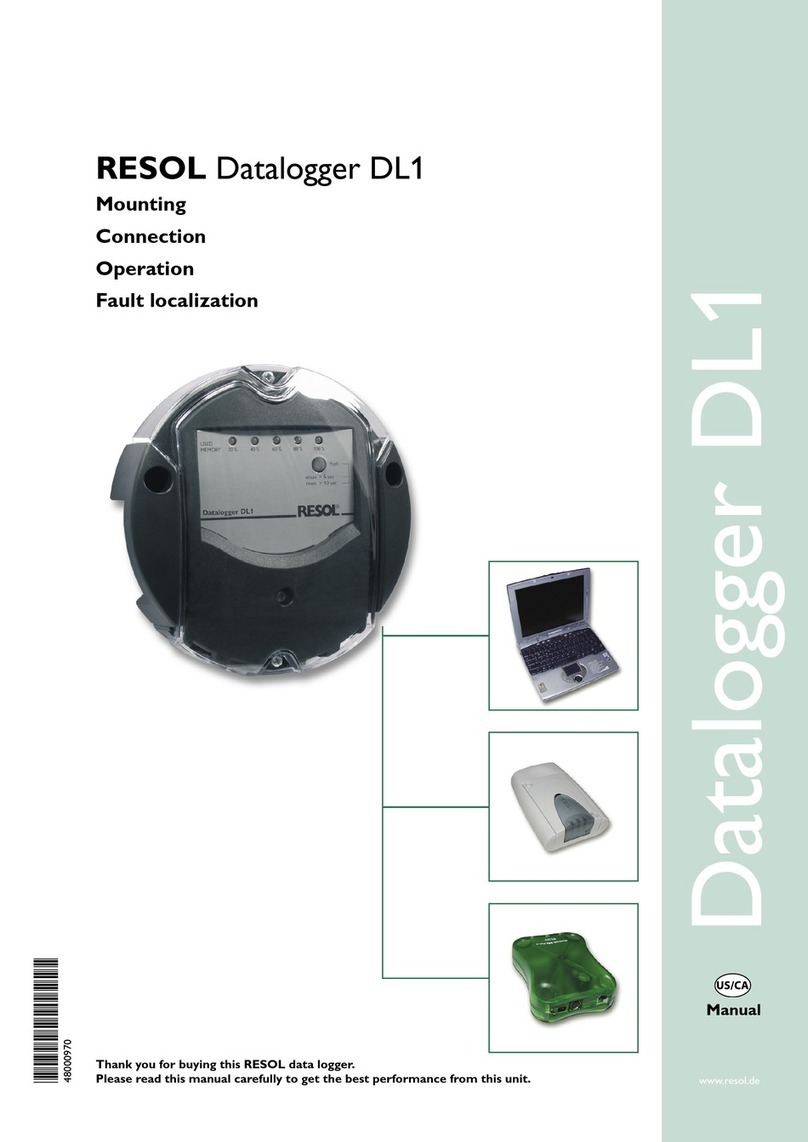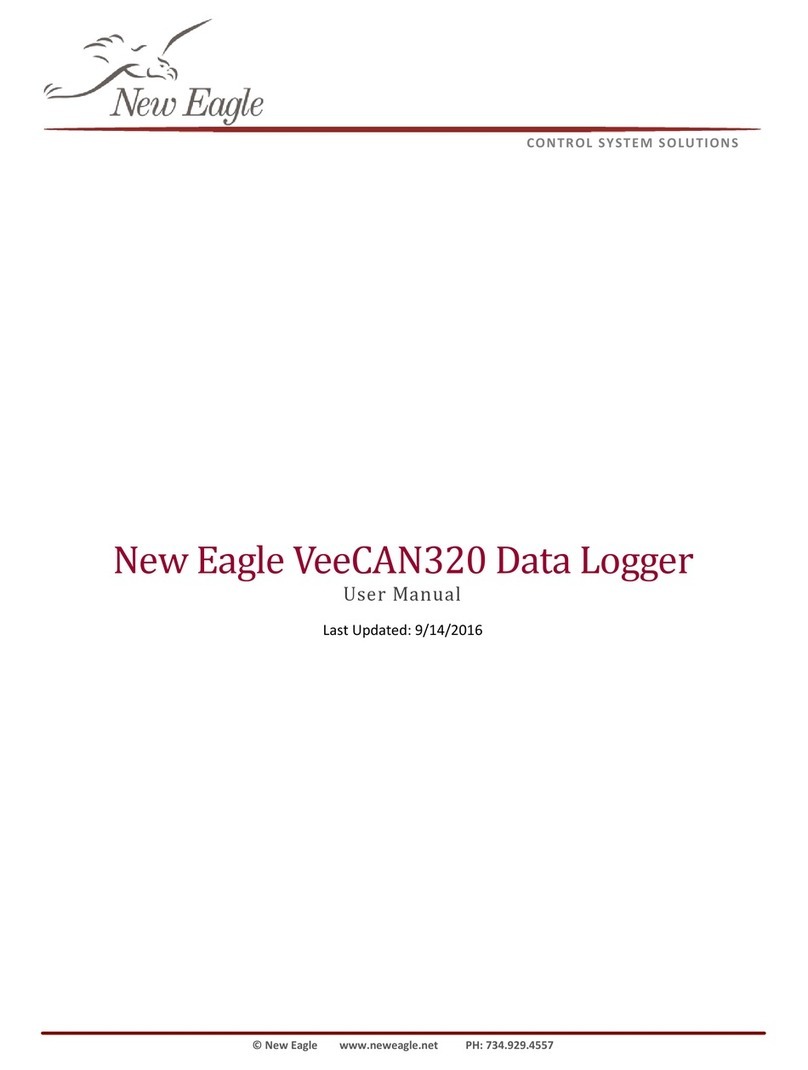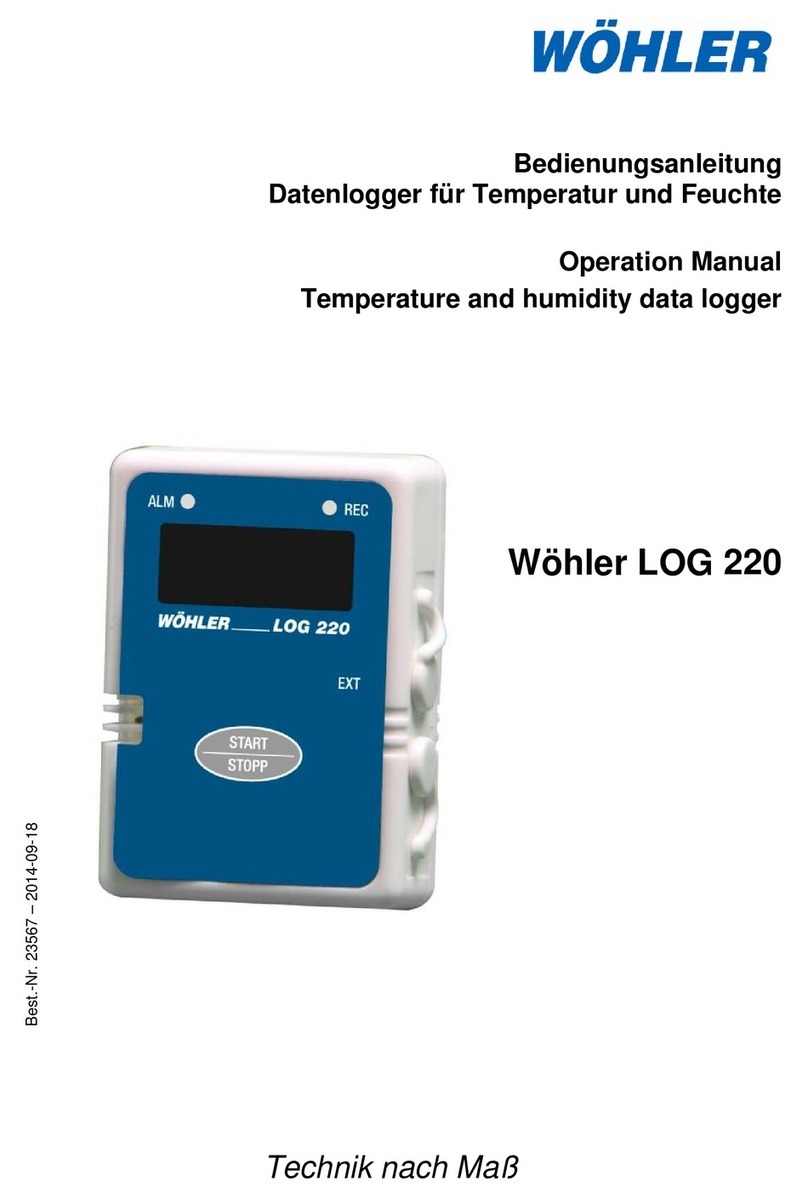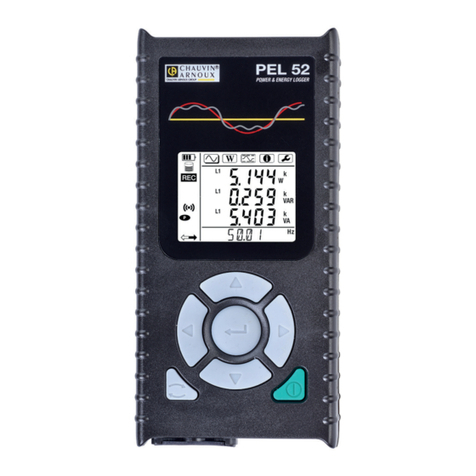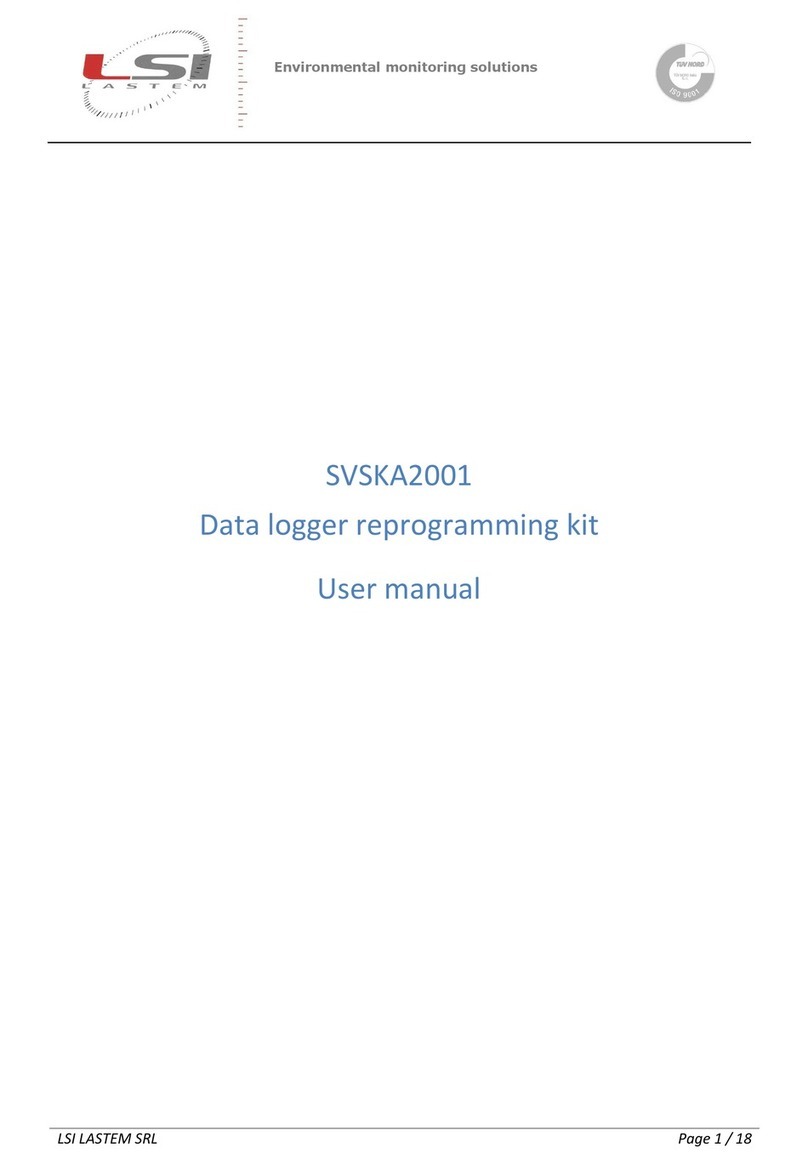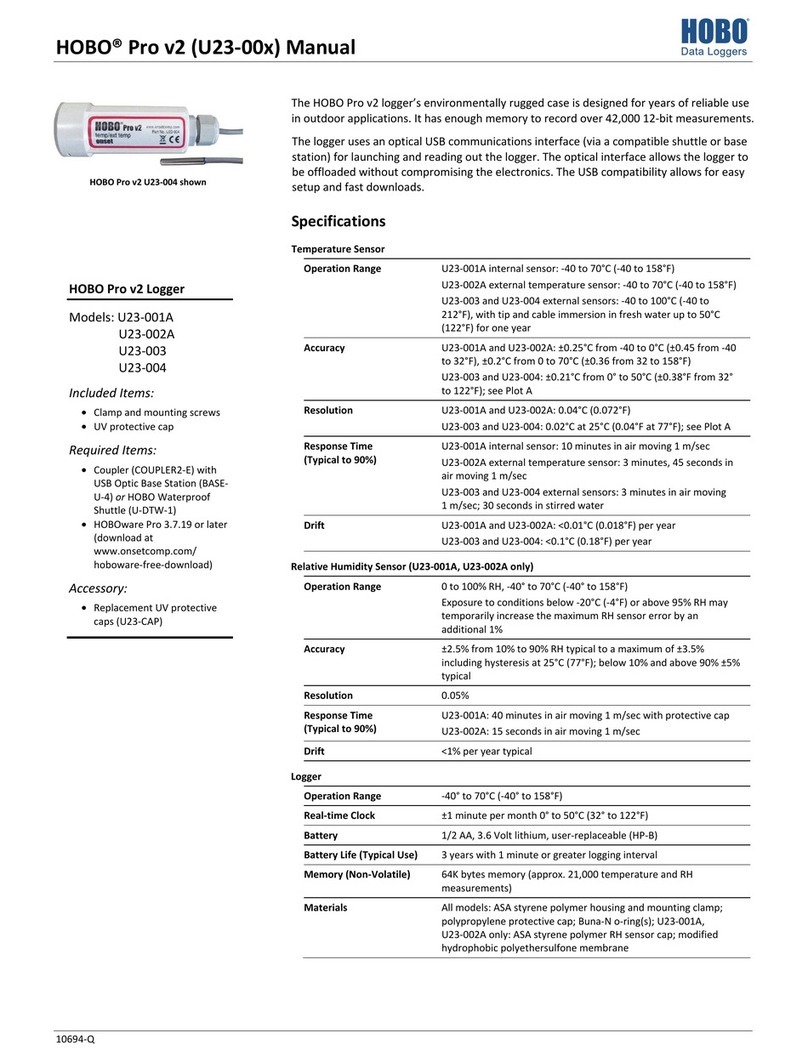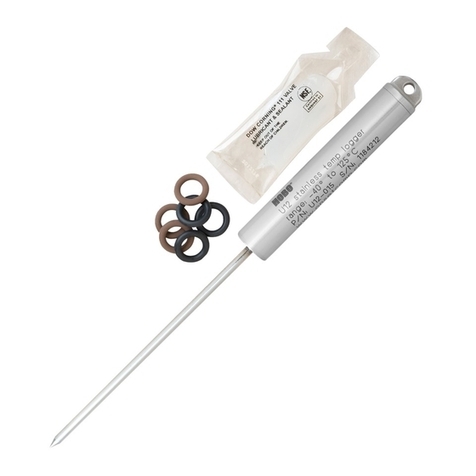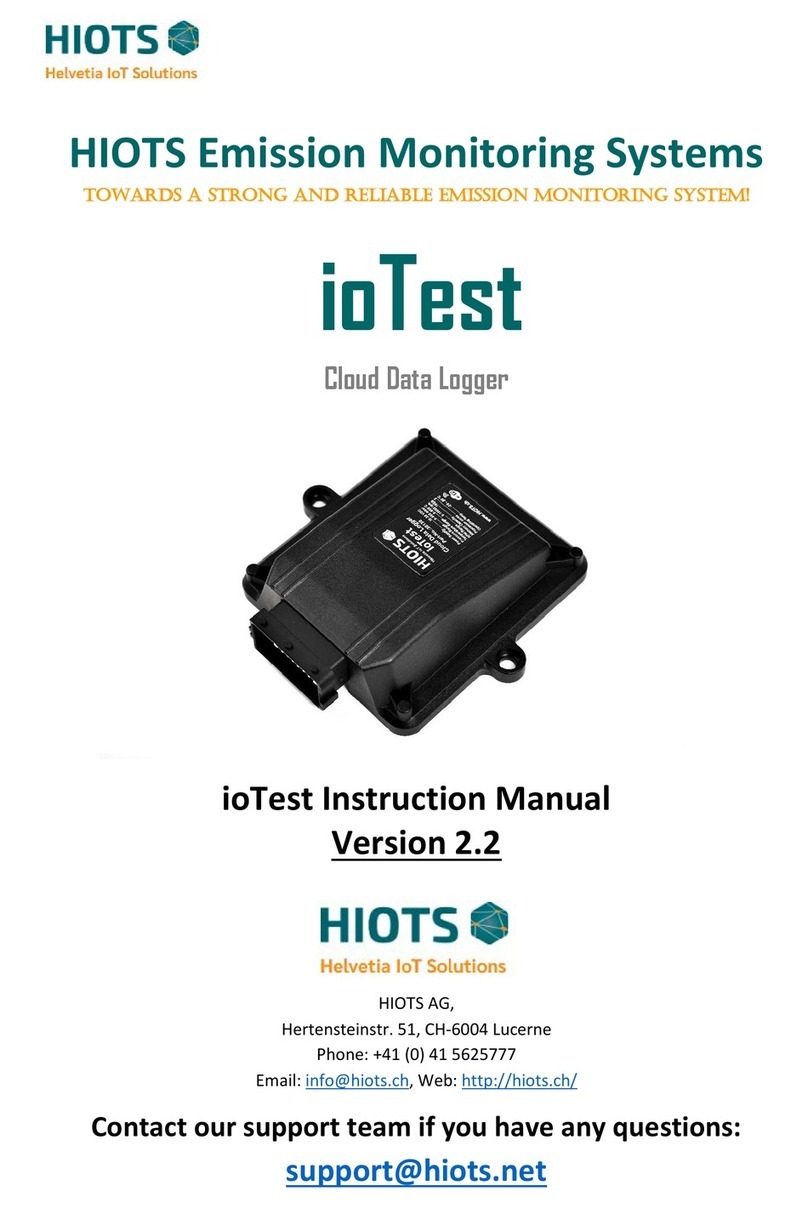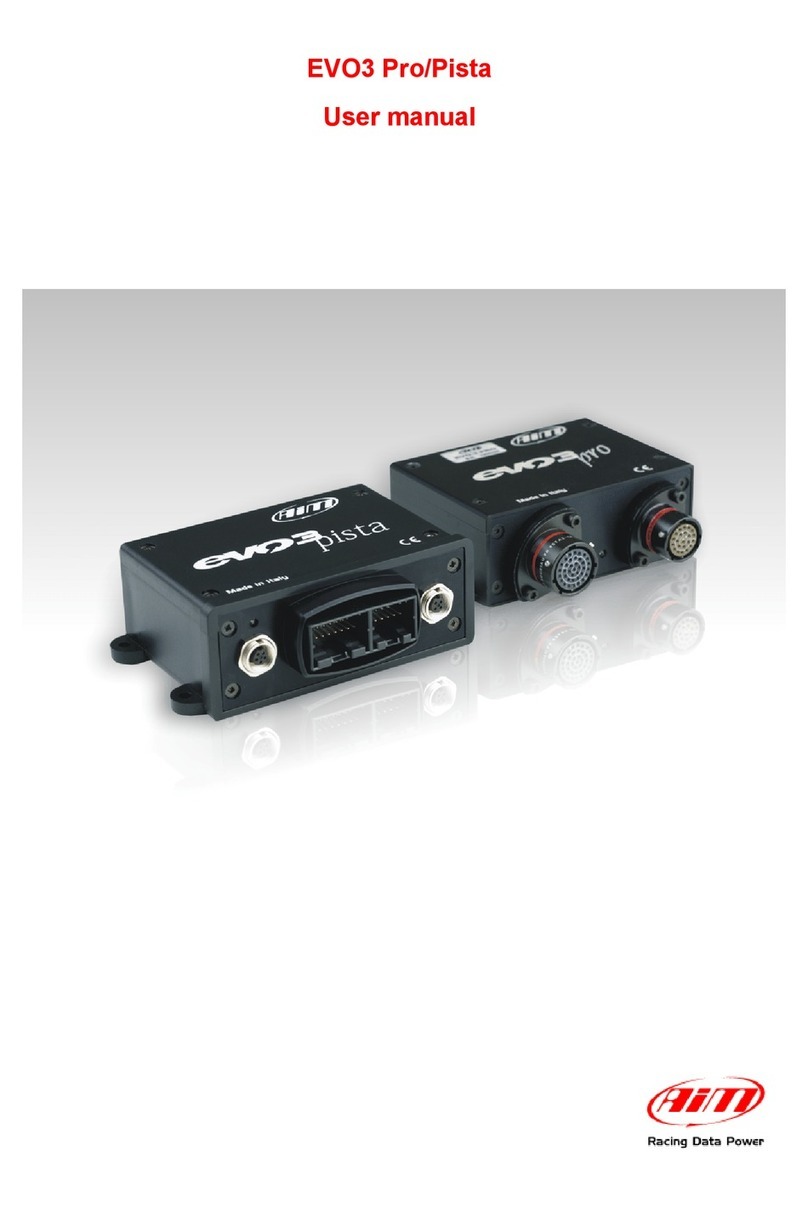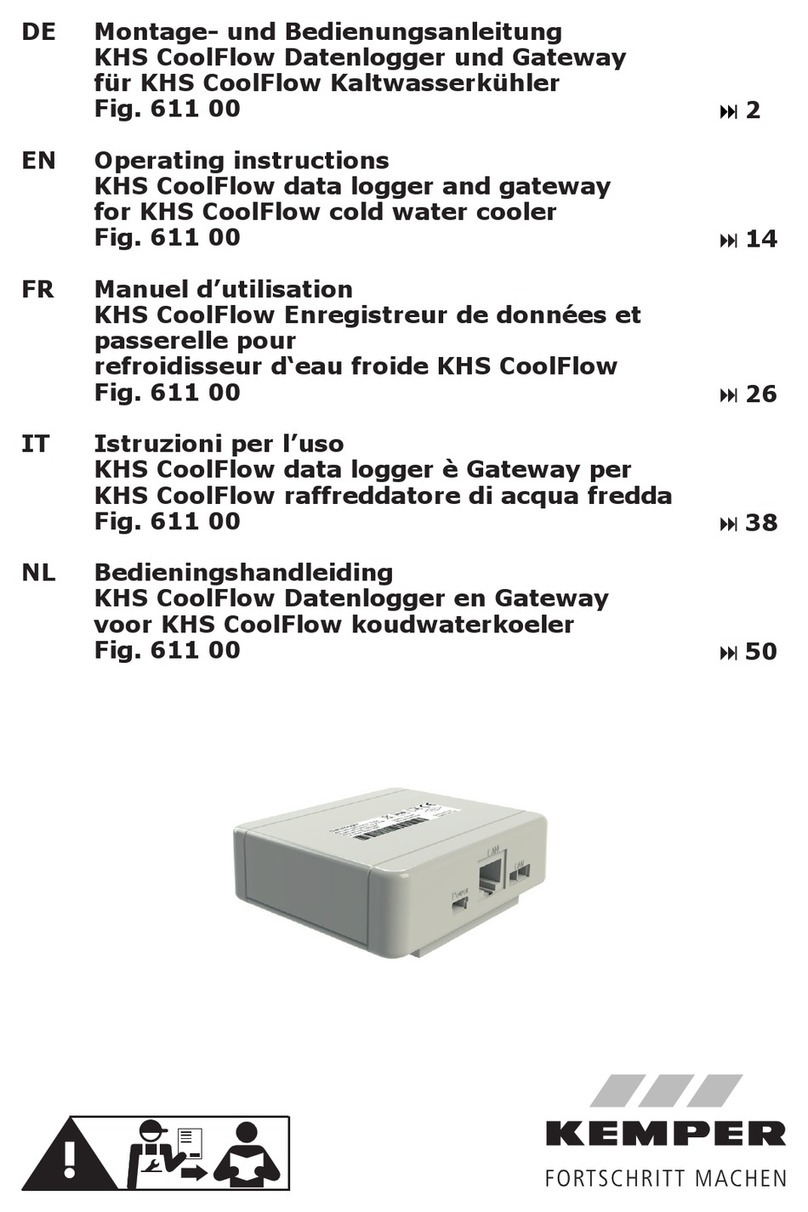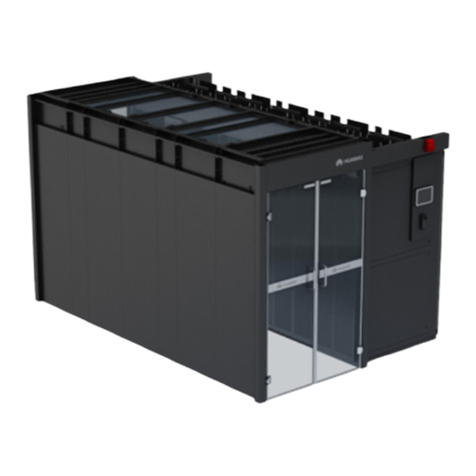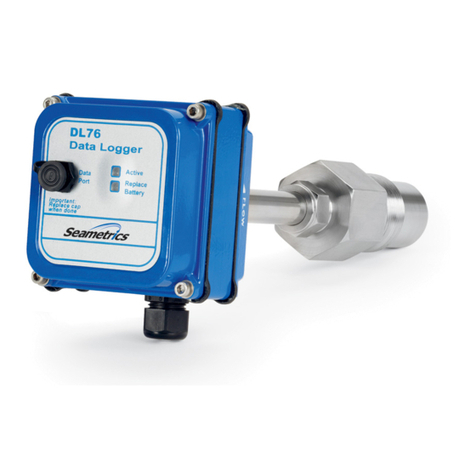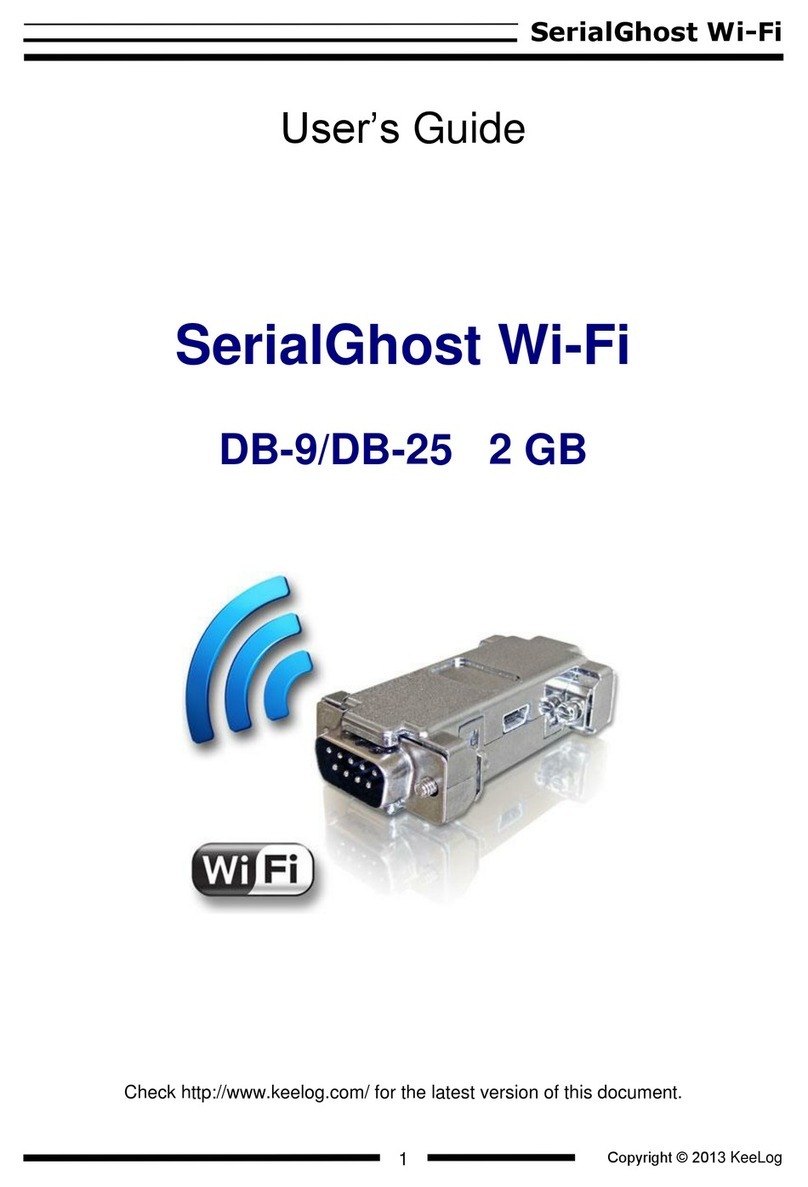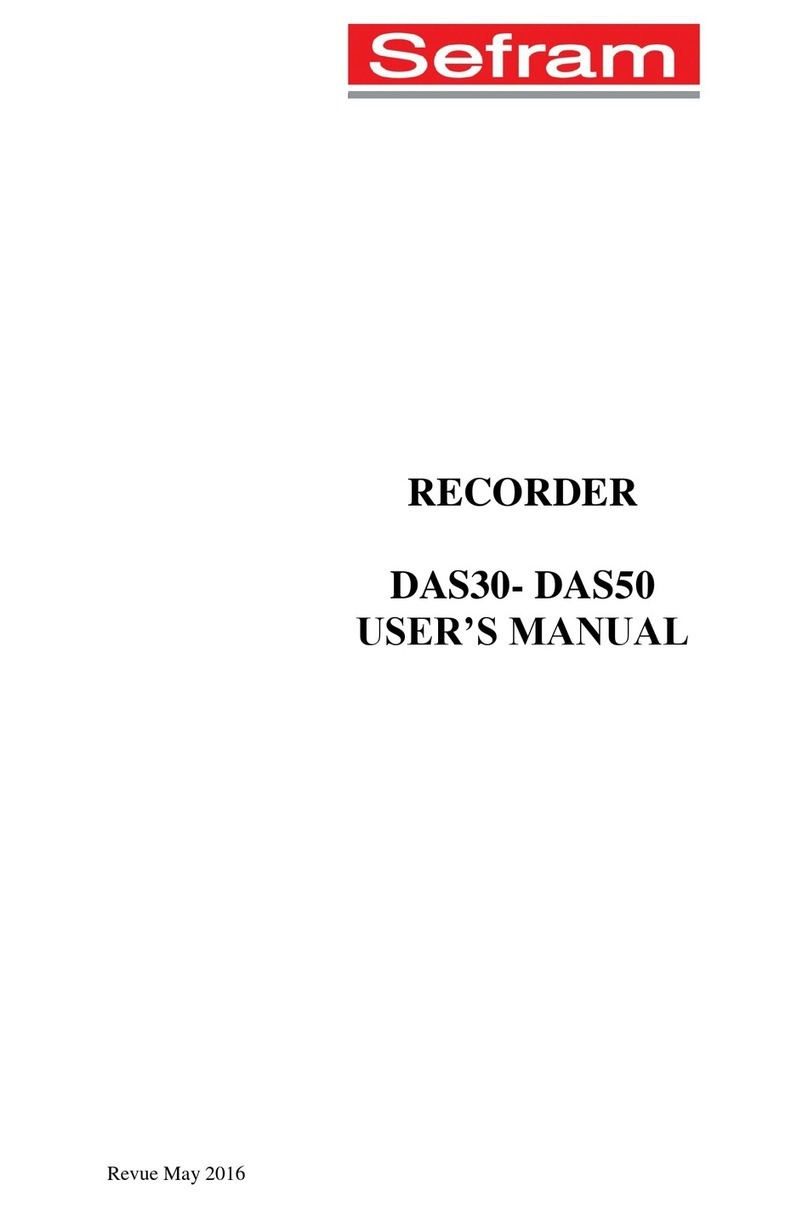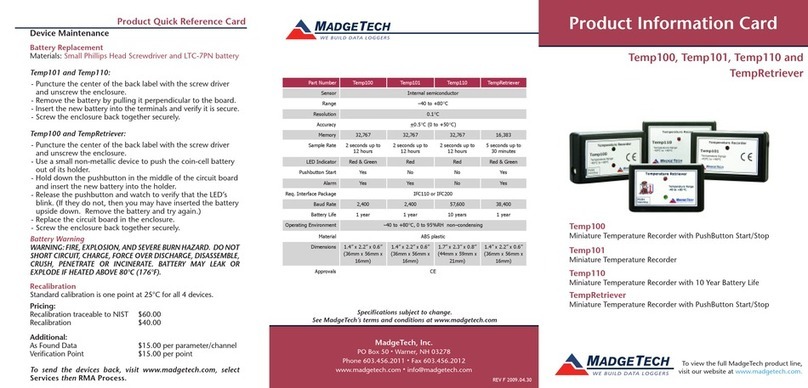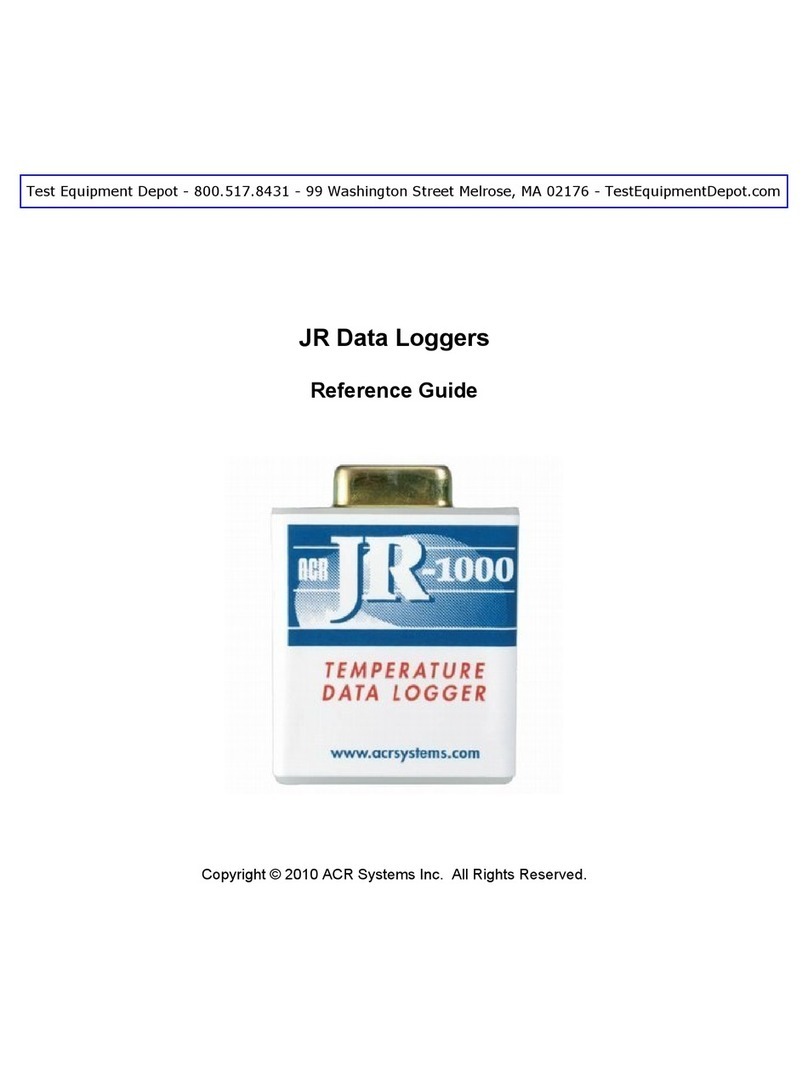T&D RTR-505 User manual

Part Names
2. Connecting an Input Module
Insert an Input Module into the module jack. Once the Unit recognizes the module, the LCD display will change as
shown below and recording will start. (If you have purchased an RTR-505-P, the Unit has been set by default to start
recording upon installation of the battery.)
1. Installing the Battery
1.
Remove the screws and open the cover.
2.
Insert the included battery.
3.
Check the rubber packing for any cuts or scratches and close the cover as it was when
opened.
Notes about Battery Installation
About Lithium Batteries
-
RTR-505 is a Remote Unit. In order to use wireless
communication, it is necessary to purchase a Base Unit
separately. (Compatible Base Units: RTR-500NW, RTR-
500AW, RTR-500, RTR-500DC,RTR-500GSM)
Wireless Data Recorder RTR-505 is referred to as the “Unit”
in this manual.
Specifications
Wireless Data Recorder
RTR-505
User’s Manual
T&D Corporation
http://www.tandd.com/
Outline of RTR-505
External Input Module Type
Splash proof (rated for use in daily life)
3. How to Read the LCD Display
When being used in very hot or cold environments the display may become difficult to read. This is not a malfunction.
Basic LCD Display
Battery Replacement
1.
When it is time for the battery to be replaced, a battery
warning mark will appear.
2.
If you do not change the battery and continue using the
Unit, the measurement display will intermittently
display [bAtt].
3.
If the battery is further left unchanged, the display will
automatically shut off.
Estimated Battery Life
In a normal temperature environment, where recorded data is down-
loaded once a day or if monitoring is carried out once every ten minutes:
Notes about Changing the Battery
Example of Display
RTR-505-TC (Thermocouple)
RTR-505-Pt (Pt100 / Pt1000)
RTR-505-V (Voltage)
RTR-505-mA (4-20mA)
RTR-505-P (Pulse)

Communication with a PC enables the following:
Notices about Optical Communication with a Base Unit
Communicating with the Computer
1.
Follow directions as issued in the software to connect
the Base Unit to your PC.
2.
Place the Data Logger on the Base Unit to align the
optical communication areas and slitted areas.
4. Registering as a Remote Unit (Communication with a PC)
In order to download data from the Unit via wireless communication or change recording settings in the Unit, it is necessary to
register a RTR-505 Unit as a Remote Unit to a Base Unit (sold separately). Remote Unit registration can be carried out by
connecting the Base Unit to a PC via USB cable and using the software included with the Base Unit to carry out optical
communication with the Remote Unit.
For details about available operations via wireless communication or how to make recording settings, see the Introductory
Guide included with the Base Unit or see the application’s Help.
DANGER
Do not take apart, repair or modify the Unit.
Do not use any other batteries than those that are specied in this manual.
If water or a foreign object enters the case, immediately remove the battery
and cease using it.
Store the Unit and accessories out of the reach of children.
If any smoke or strange smells are emitted from the Unit, immediately remove
the battery and stop using.
Please be careful not to touch the Unit during or after use in overly hot or cold
environments; it may cause burns or frostbite.
CAUTION
This Unit has been designed for private and/or industrial use only. It is not for
use in situations where strict precautions are necessary such as in connection
with medical equipment, where directly or indirectly.
Harmful gases or chemicals may cause corrosion and/or other danger to the
Unit. Also, by coming in contact with hazardous substances, harm may occur
to the people handling the Unit. Therefore, do not use or store the Unit in any
environment that is exposed to chemicals and harmful gases.
Battery life varies depending upon measuring environment, frequency of
communication, Unit settings, and battery performance.
When using the Unit in a low-temperature environment (below -20°C), the
battery power will be depleted more quickly than when using under normal
temperature conditions.
Battery terminals may provide insufcient contact due to age or vibration.
The Unit becomes splash proof (rated for use in daily life) only after the Input
Module has been connected.
If the Unit is not to be used for a long period of time, store it in a place where it
is not exposed to high temperature and high humidity.
Do not remove or reinsert the battery once it has been set; continue using until
battery power is depleted. Always use a new battery for replacement.
To maintain waterproof capacity, we suggest periodically changing the parts
inside the case.
If the Unit is subjected to signicant temperature change while wet, it may
cause condensation inside the case.
Do not drop or expose the Unit to a strong impact.
Do not put ngers or foreign objects into the modular jack.
Do not use or store the Unit in places such as listed below. It may result in
malfunction or unexpected accidents.
Contact with oil may cause cracks to appear in the casing of the Unit.
When using this Unit in environments where such oils are present, please
insure that it is protected from contact through use of a polyethylene bag
or other means.
Notices about using the Input Modules
When making "Adjustment Settings" in the Adjustment Tools application, the
adjustment values will be saved to the Input Module. Therefore, when an Input
Module is replaced, it is necessary to re-make any desired adjustment settings to be
written into the newly connected module.
Compliance Information
FCC Statement
This device complies with Part 15 of the Federal Communications Commission
(FCC) rules. Operation is subject to the following two conditions: (1) This device
may not cause harmful interference, and (2) This device must accept any
interference received, including interference that may cause undesired operation.
Caution:
Note about Antenna Usage:
IC Statement
This device complies with RSS-210 of the Industry Canada (IC). Operation is
subject to the following two conditions: (1) This device may not cause harmful
interference; and (2) This device must accept any interference received, including
interference that may cause undesired operation.
Ce dispositif est conforme à la norme RSS 210 d’Industrie Canada.
L’utilisation de ce dispositif est autorisée seulement aux conditions suivantes : (1)
il ne doit pas produire de brouillage et (2) l’utilisateur du dispositif doit être prêt à
accepter tout brouillage radioélectrique reçu, même si ce brouillage est
susceptible de compromettre le fonctionnement du dispositif.
Important Notice
Wireless products cannot be used in countries other than where those products have
been approved for use, according to that country's wireless regulations.
T&D Corporation shall in no manner whatsoever take responsibility for the usage of
these products, nor be liable in any manner for legal consequences stemming from
the usage of these wireless products in unapproved areas.
3. How to Read the LCD Display (continued from previous page)
Pulse Rate (Max: 61439)
Total Pulse Count
Other Marks or Messages on Display
Logging Capacity FULL
Estimation of time until “FULL” is displayed
Data Transmission via Wireless Communication
Check
Input Module Unrecognized (factory default)
Input Module Unconnected or Damaged
Sensor Unconnected or Damaged
Measurement Range Exceeded
Display Range Exceeded
Important Notices and Disclaimers
In order to properly use this product, please carefully read this manual before using.
T&D Corporation accepts no responsibility for any malfunction of and/or trouble with this product or with your computer that is caused by the improper handling of this product
and will deem such trouble or malfunction as falling outside the conditions for free repair outlined in the attached warranty.
Safety Precautions and Instructions
To prevent any loss or damage to our customers, other people and/or property, and to ensure the proper use of our products we ask that before using our product you carefully
read, understand and follow the safety rules and precautions for our products as outlined below.
Other T&D Data Logger manuals
